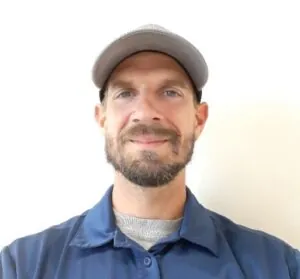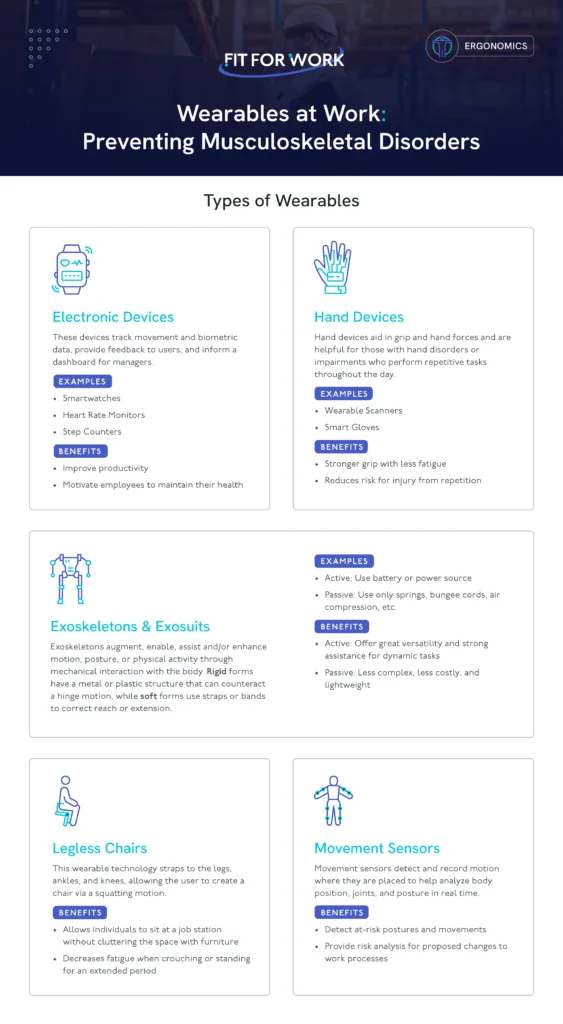By Jacob Wilkins
Ergonomics Specialist, Fit For Work
An ergonomics program can provide numerous benefits to your organization, from reducing the likelihood of injury to increasing employee retention and beyond. Some business owners, however, may still be unsure whether ergonomic services will effectively serve their specific working environment. Here are seven key points to help you assess your business’s need for ergonomics and its potential for long-term ROI.
1) You’re Experiencing a High Percentage of Injuries Due to Material Handling
Manual material handling (MMH) movements such as pulling, pushing, lifting, and carrying can often seem like second nature in the workplace, but if they are not performed properly, they can lead to costly injuries over time. In fact, MMH is the most common source of compensable injuries in the U.S. workforce with more than 80% of work-related musculoskeletal disorder (WRMSD) claims being caused by MMH. Ergonomics can help your workers be more aware of their work environment, better understand the functional workspace, properly leverage mechanical devices, and more.
2) You Want to Perform a Physical Demands Analysis
A physical demands analysis (PDA) identifies the physical requirements of a role to help reduce injuries. This information can help identify and provide solutions to WRMSD concerns, which can in turn expand your hiring pool. A physical demands analysis is a key step in the greater ergonomic strategy, and one a professional ergonomic partner can help develop and carry out.
3) You Want to Create Post-Offer Tests
The findings of the PDA help Certified Professional Ergonomists (CPEs) shape post-offer tests to further establish that your prospective employees are physically capable of performing in a given role by adding scientific rigor to ensure ADA/EEOC compliance. New hires represent an increased risk for WRMSDs, as they may be more susceptible to injury due to unfamiliarity with tasks and safety protocols. Post-offer testing helps reduce the injury potential associated with new hires, ensures best fit hiring of new employees, and can improve retaining employees for the long haul.
4) You Struggle with EEOC and ADA Compliance
EEOC and ADA regulations can be especially challenging to navigate for employers in physical and repetitive environments. If your physical ability tests have what is termed a “disparate impact” on female applicants, it can pose a costly threat to your company. An ergonomic partner will help you tailor your tests to the precise demands of the job, ensuring they are fair, compliant, and successful in acquiring the right workers regardless of gender.
5) You Are Failing to Connect Engineering Changes with Worker Behavior
Ergonomics functions within the scope of both the engineering of your environment and the psychology of your workers. Failing to understand the relationship between performance and safety, and how to optimize both, can undermine the success of your safety program. An ergonomic partner specializes in bringing together the cognitive, physical, and organizational aspects of your business to best serve your workforce at every level.
6) You Are Considering a Job Rotation System
A job rotation system rotates workers between different roles and tasks at set time intervals, with the goal of preventing any one worker from being overly exposed to a particularly demanding or high-risk task on an extended basis. Such systematic rotation promotes variety on the job to reduce physical burden, improve morale, and increase the skill and flexibility of your workforce, among other benefits.
7) You Need Flexible, Ongoing Access to Ergonomic Expertise
Ergonomics isn’t a one-time fix; it’s an evolving process that benefits from continuous support. Having on-demand access to a CPE or an ergonomic specialist can help organizations address emerging issues, answer employee questions, and fine-tune strategies as work environments and tasks change. This kind of ongoing partnership supports long-term injury prevention, boosts employee morale, and contributes to a safer, more productive workplace.
Fit For Work helps organizations reduce injuries and related costs through innovative ergonomic design and strategic safety solutions. Click here to learn how we can help your team stay safe and productive.
 Jacob Wilkins is an Ergonomics Specialist for Fit For Work. He provides ergonomics consulting services for various clients in the industrial and office settings. Jacob earned a Bachelor of Science in Kinesiology from Bowling Green State University and has more than 18 years of experience in the injury prevention and ergonomic fields. Prior to joining Fit For Work in 2016, Jacob began his career at a truck manufacturing facility in San Antonio, TX. He has completed thousands of physical demands analyses and ergonomics assessments, as well as countless injury prevention trainings in nearly every industry.
Jacob Wilkins is an Ergonomics Specialist for Fit For Work. He provides ergonomics consulting services for various clients in the industrial and office settings. Jacob earned a Bachelor of Science in Kinesiology from Bowling Green State University and has more than 18 years of experience in the injury prevention and ergonomic fields. Prior to joining Fit For Work in 2016, Jacob began his career at a truck manufacturing facility in San Antonio, TX. He has completed thousands of physical demands analyses and ergonomics assessments, as well as countless injury prevention trainings in nearly every industry.
Jacob currently resides in Texas with his wife and children, where they are actively involved in the foster care community and their church family. For fun, he enjoys spending time outdoors with his family, especially in the cool weather by a nice campfire.





